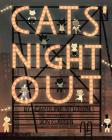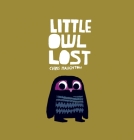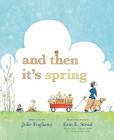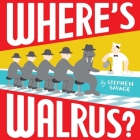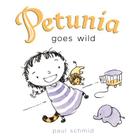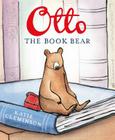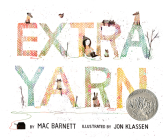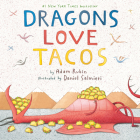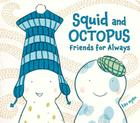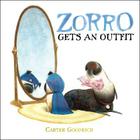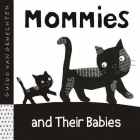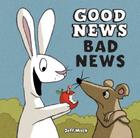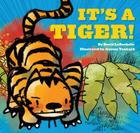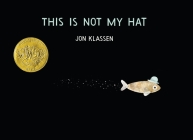 I loved Taylor's Lips Touch: Three Times (despite being mildly embarrassed by the title, and oof, that paperback cover is rough), and Daughter bewitched me on the first dang page, with the phrase "the occasional cheek-chew of bitterness." Yes, thank you! Perfect image, taking the sounds of language into account! It's like she's a writer!!! Oh, all the hearts.
I loved Taylor's Lips Touch: Three Times (despite being mildly embarrassed by the title, and oof, that paperback cover is rough), and Daughter bewitched me on the first dang page, with the phrase "the occasional cheek-chew of bitterness." Yes, thank you! Perfect image, taking the sounds of language into account! It's like she's a writer!!! Oh, all the hearts.But my girl-crush on this book goes beyond prose, of course. The fantasy world Taylor creates is both wildly detailed and deep and totally original, qualities in woefully short supply. The story centers on Karou, a blue-haired art student living in Prague, known among her classmates for her elaborate stories and sketches of a family of imaginary beasts: serpent-woman, giraffe-man, parrot-lady, and ram-horned Brimstone, the Wishmonger who deals in teeth, with his raven/bat messenger Kishmish on his shoulder.
Except it's all true--the beasts, who call themselves chimaera, raised Karou from a baby. And her blue hair? A wish, a small one, for they come in denominations corresponding to their power. Brimstone (who I inescapably picture as Urkonn from Joss Whedon's Fray comic. She's even got the right color hair!) only ever gives Karou small wishes to spend, scuppies and shings, never a lucknow or a gavriel. (And she's not willing to pull out her own teeth to earn a bruxis, like the sad, demon-haunted Moroccan graverobber, Izîl, part of Brimstone's sketchy global network of dealers.)
Then Karou's double life is shattered, thanks to an angelically beautiful being called Akiva (super-gorgeous people are a YA/romance trope I sorta roll my eyes at, but I heart Taylor too much to really complain), and she finds herself plunged into the middle of a never-ending war in another world entirely, a world to which she's somehow connected. Her unraveling of her true identity, and her search for a way Elsewhere to reunite with her monstrous family, intertwine with one o' them Delirious Scorching All-Encompassing love stories that would be tiresome if it wasn't awesome because, to repeat: Taylor is a dang writer. Liked this book so much I don't even care that it's part one of a trilogy like everything else in YA these days--instead, I'm giddy with anticipation.
 Mixed feelings about Shadow and Bone. On the positive side, the setting was amazing! And unique: fantasy Russia, like Tolstoy with magic! The stand-in kingdom, Ravka, is cut off from its ports by the Shadow Fold, a positively Miévillesque rift of darkness teeming with carnivorous winged beasts. Orphaned Alina (hey, that's my mother-in-law's name!) is crossing with her regiment when they are attacked, and in a moment of panic discovers she can channel sunlight. She's whisked away to the headquarters of the Grisha, orders of robed mages with power over everything from metal to storms, led by the mysterious (and alluring) Darkling. The system of magic (is there a technical term for this? Thaumaturgy?) is unique and fun, with the Grisha classified into Materialki (makers and engineers), Etherealki (summoners of weather and winds), and Corporalki (healers and the terrifying Heartrenders), with their own cliques and uniforms. And it's a kick to have onion domes and kvas instead of turrets and mead.
Mixed feelings about Shadow and Bone. On the positive side, the setting was amazing! And unique: fantasy Russia, like Tolstoy with magic! The stand-in kingdom, Ravka, is cut off from its ports by the Shadow Fold, a positively Miévillesque rift of darkness teeming with carnivorous winged beasts. Orphaned Alina (hey, that's my mother-in-law's name!) is crossing with her regiment when they are attacked, and in a moment of panic discovers she can channel sunlight. She's whisked away to the headquarters of the Grisha, orders of robed mages with power over everything from metal to storms, led by the mysterious (and alluring) Darkling. The system of magic (is there a technical term for this? Thaumaturgy?) is unique and fun, with the Grisha classified into Materialki (makers and engineers), Etherealki (summoners of weather and winds), and Corporalki (healers and the terrifying Heartrenders), with their own cliques and uniforms. And it's a kick to have onion domes and kvas instead of turrets and mead.
However, I'm not crazy about Alina herself, and since she narrates in first person, she's inescapable. A lot of it's the comes-with-the-territory of fantastic protagonists thinking and talking like modern American teenagers (well, modern American teenagers who don't curse), but she's also kinda whiny about being So Special and it's So Hard. (Yes, this also comes with the territory.) She doesn't ruin the book (see: Setting, amazing); still, I would have enjoyed it more in third person.
 I really liked The Book of Blood and Shadow, howevs! It's more of an occult historical thriller than a straight-up paranormal, with dueling, ancient secret societies, and a Renaissance machine for talking to God, and the freakin' Voynich manuscript! Shades of Foucault's Pendulum! (And my friend Hal Johnson's upcoming, awesome Immortal Lycanthropes.) Well-researched, well-paced, whip-smart. Also, when was the last time you read a YA novel with serious discussion of the existence of God?
I really liked The Book of Blood and Shadow, howevs! It's more of an occult historical thriller than a straight-up paranormal, with dueling, ancient secret societies, and a Renaissance machine for talking to God, and the freakin' Voynich manuscript! Shades of Foucault's Pendulum! (And my friend Hal Johnson's upcoming, awesome Immortal Lycanthropes.) Well-researched, well-paced, whip-smart. Also, when was the last time you read a YA novel with serious discussion of the existence of God?In one night, Nora Kane's life goes to pieces: one best friend killed, the other (his girlfriend) catatonic, her own boyfriend missing and the prime suspect. Unwilling to believe Max would ever harm Chris and Adriane, Nora suspects a connection to the research project they'd been working on with eccentric professor Anton Hoffpauer (himself the victim of a stroke shortly before the murder): translating a cache of letters related to the Voynich manuscript, an absolutely real and crazy mysterious 15th-century document written in an unknown language and script, full of bizarre astronomical and botanical illustrations that don't seem to correspond to anything concrete. Nora was tasked with the letters of Elizabeth Weston, stepdaughter of alchemist Edward Kelley--both real people; Kelley talked to angels, and hung out in the court of Holy Roman Emperor Rudolf II until his imprisonment and death. Puzzles in Elizabeth's correspondence set Nora and Adriane on a quest to Prague to clear Max's name, find Chris's real killer, and possibly reconstruct an apparatus known as the Lumen Dei, a four-hundred-year-old direct line to the Lord. Their path is full of danger and classical scholarship, betrayal and secrets and leaps of faith. Oh, and the golem of Prague! And Kepler! And Latin ciphers!
Not to mention: extra cool that Blood blends right back into the Prague setting of Daughter . . . and extra, extra cool that these three word-shifting titles manage to feed right into the sequel to Daughter (NOVEMBER 6TH SO FAR AWAY AUGH), Days of Blood and Starlight! Waiting with bated breath.






